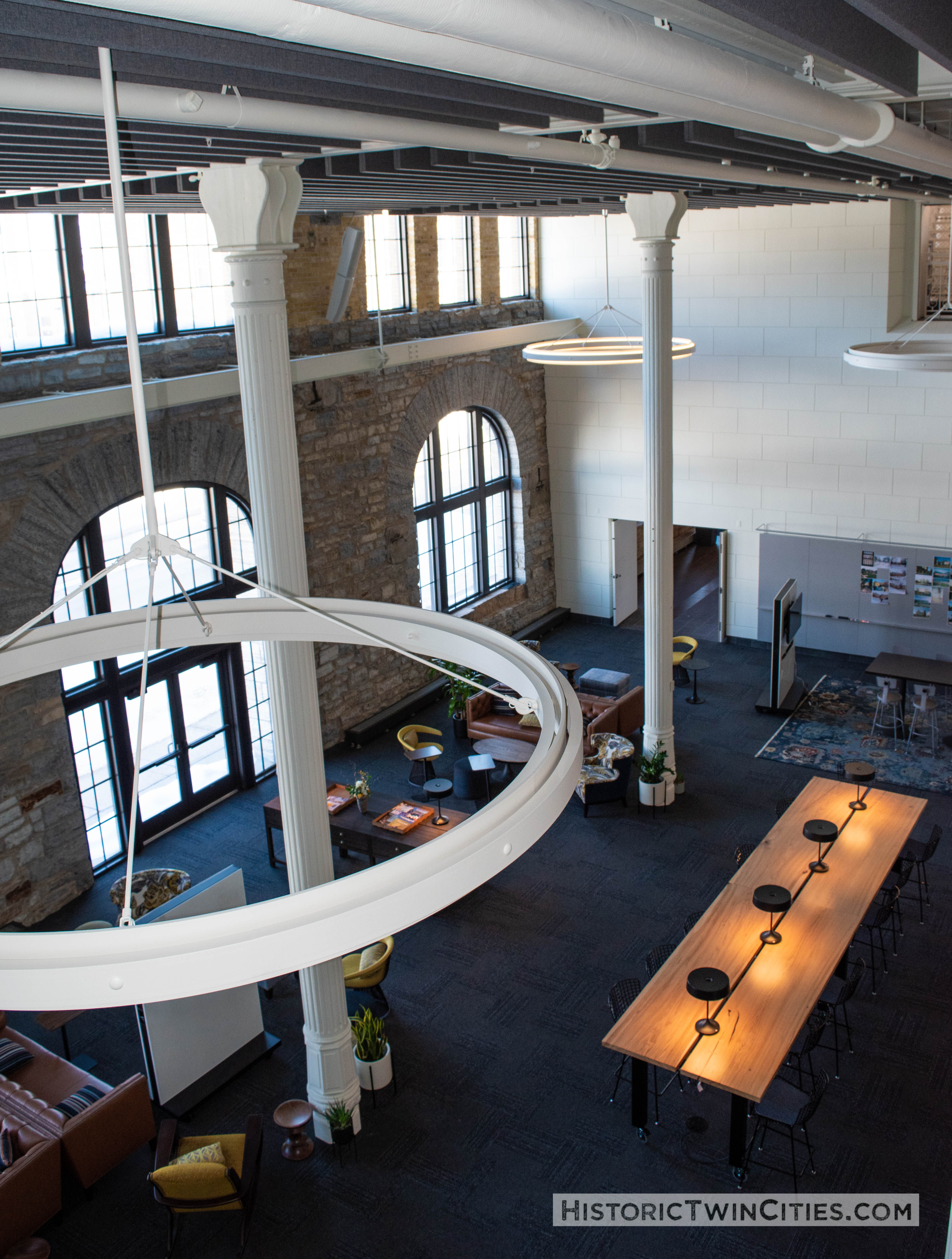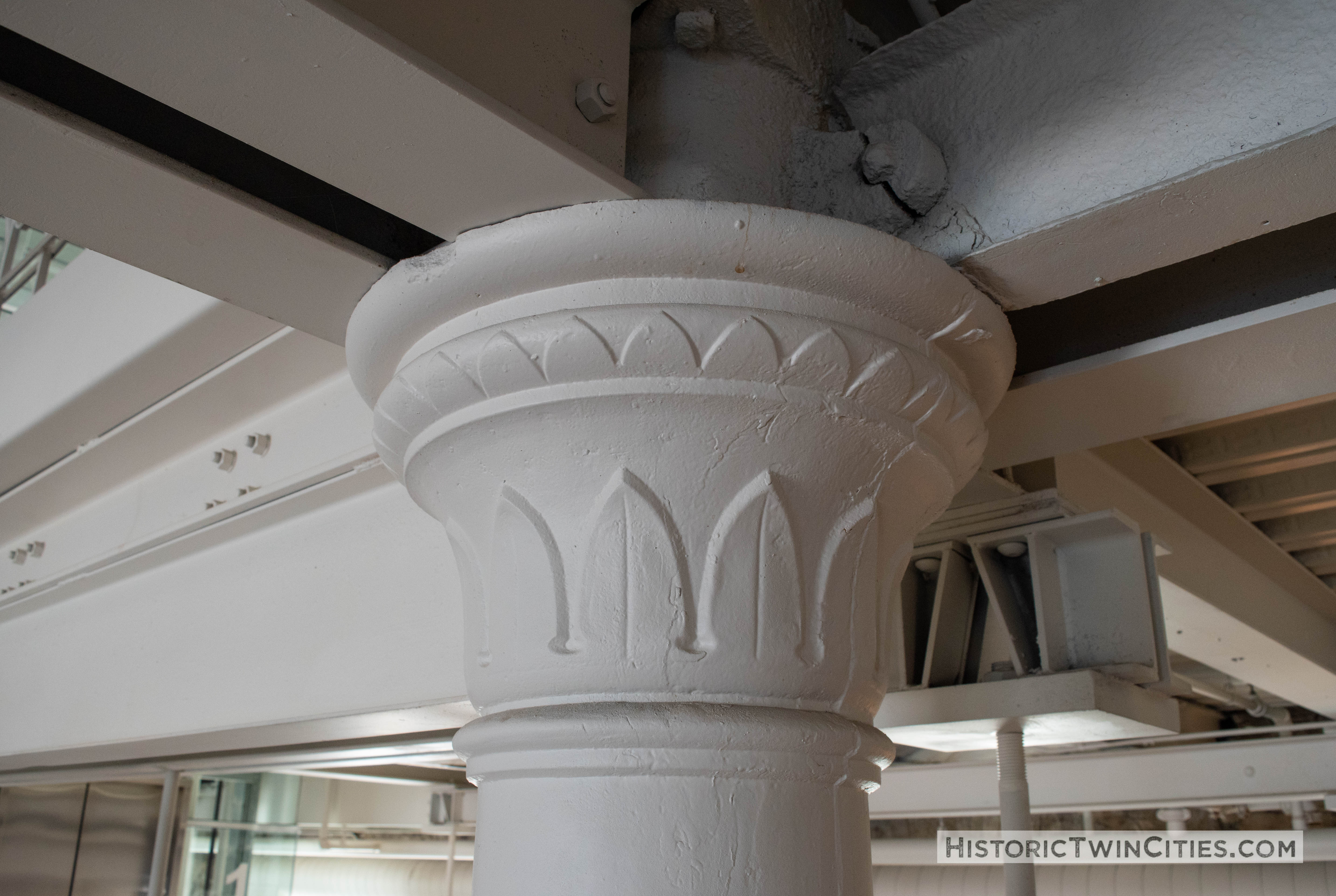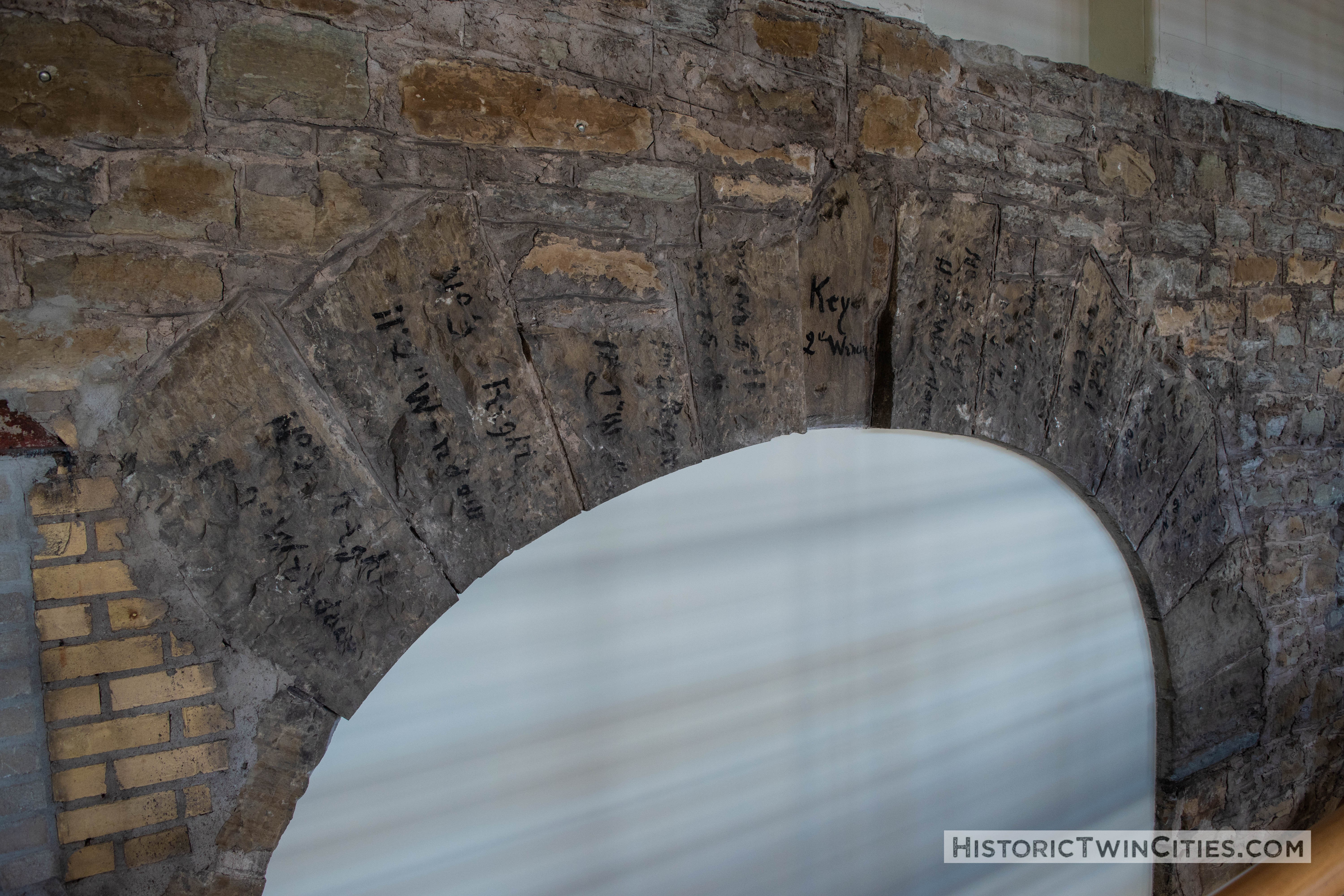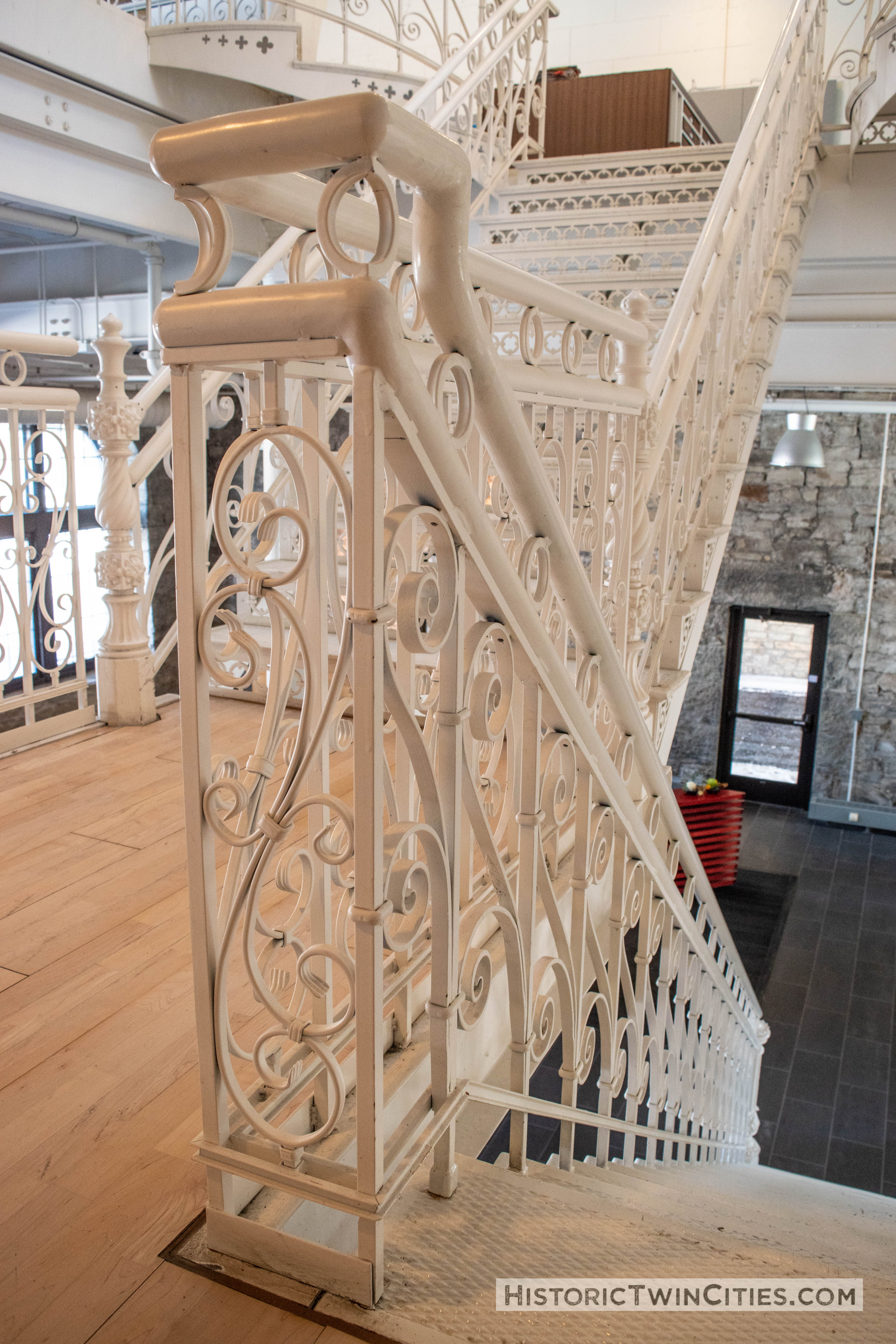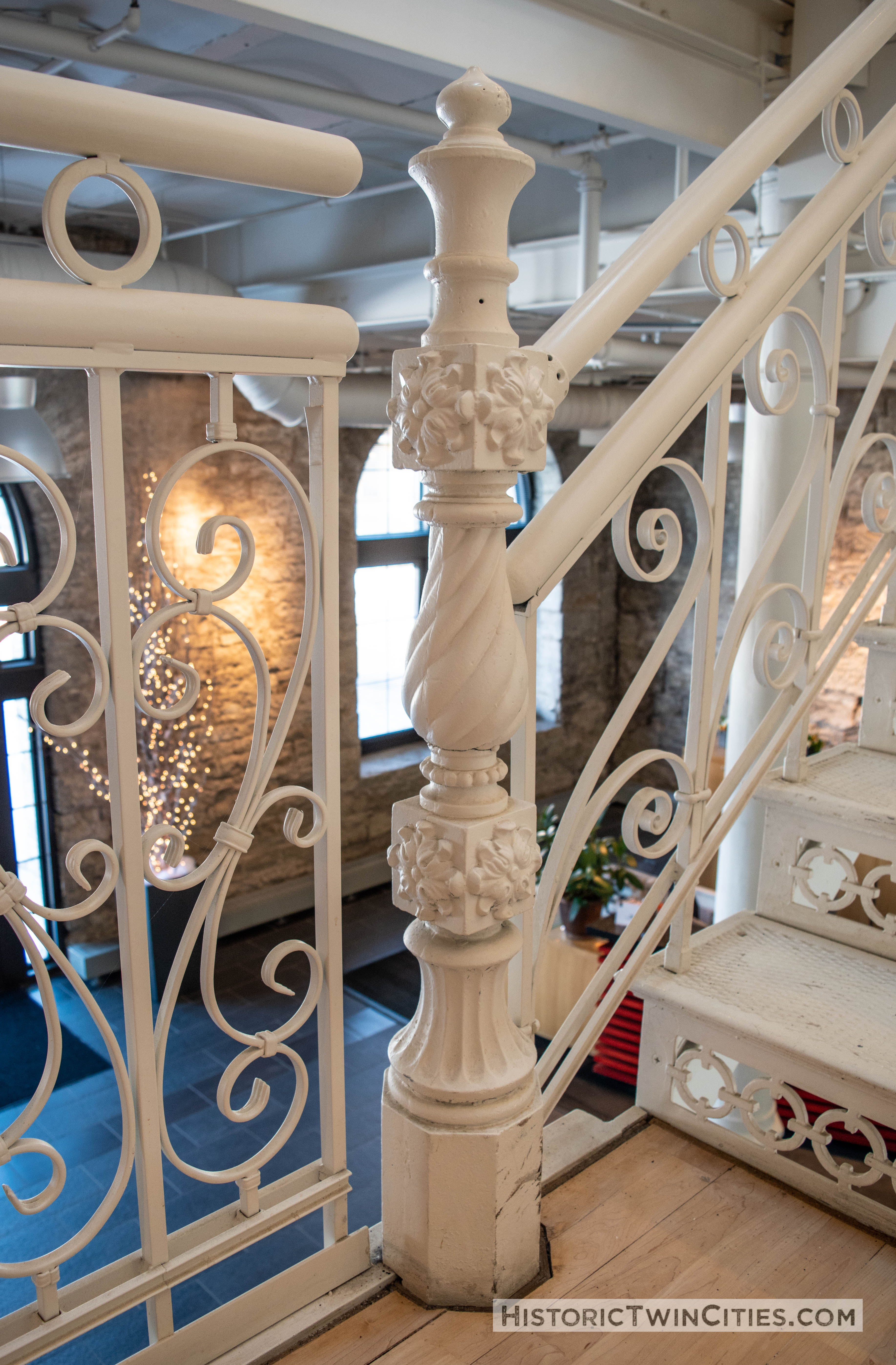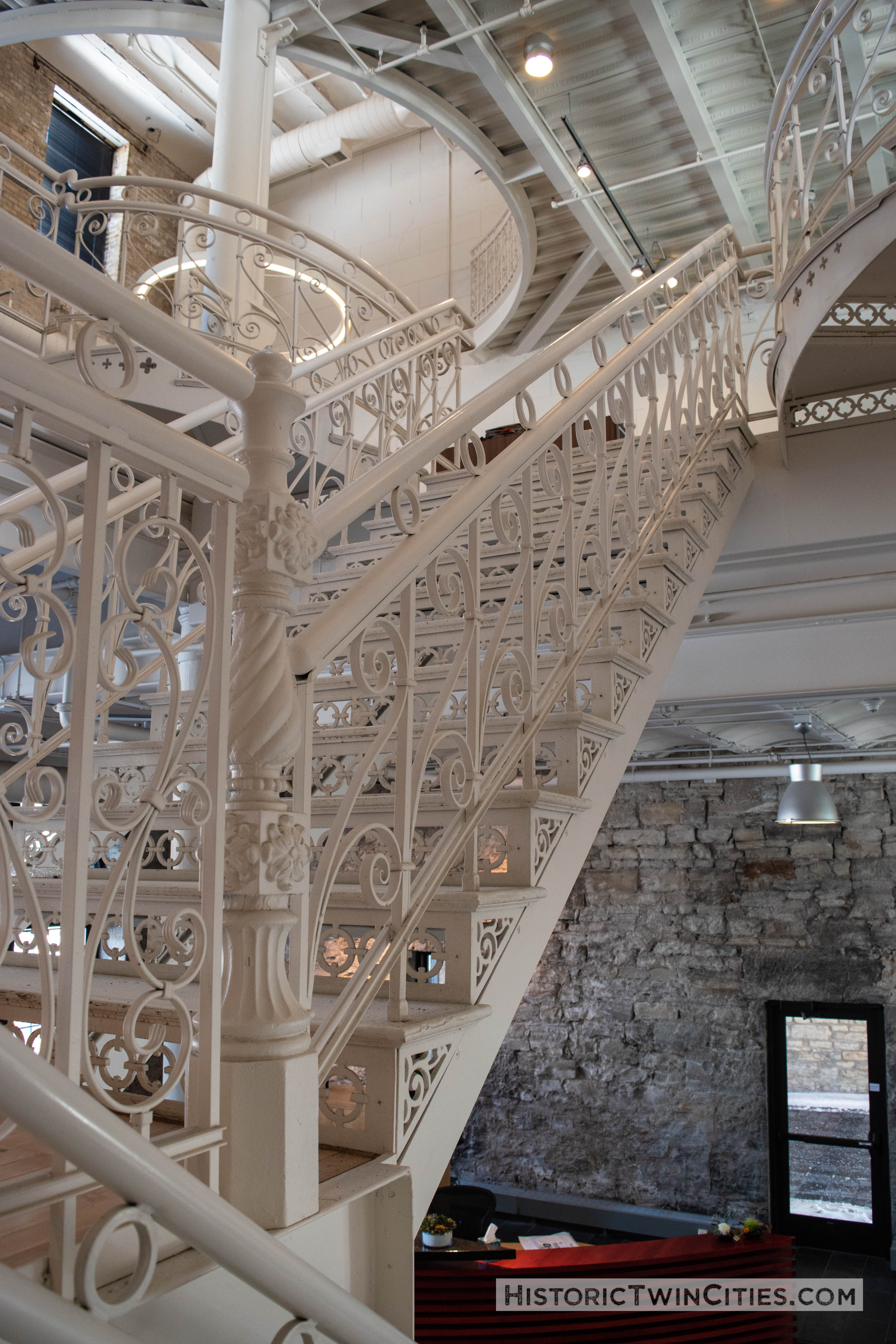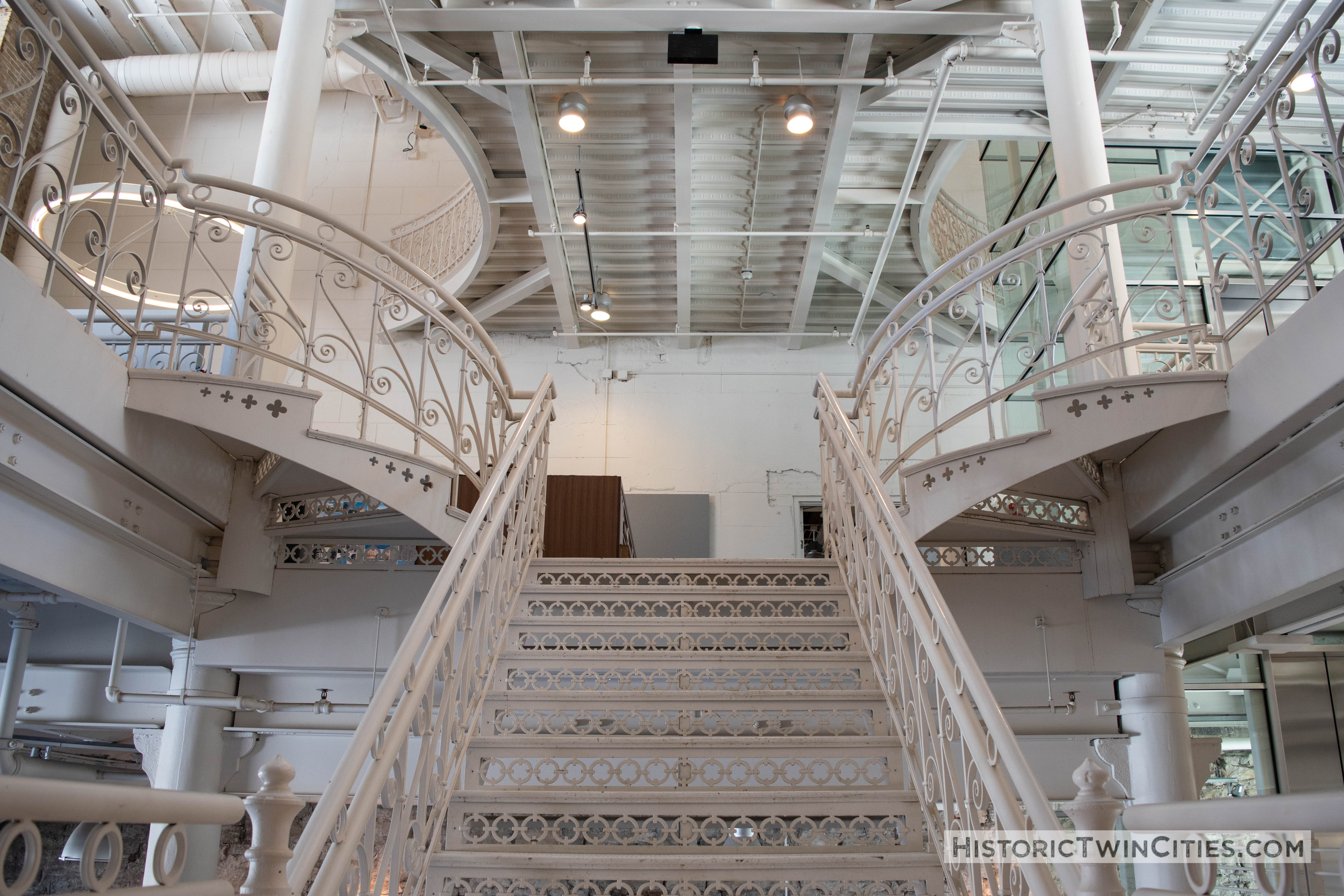
When it comes to beer, the Twin Cities has a very rich brewing history. Names like Schmidt, Hamm’s, Gluek’s, and Grain Belt immediately come to mind when reminiscing about the great breweries that once dominated the local industry. As demand for their products increased in the late 1800’s and early 1900’s, large brewery complexes were built in the Twin Cities. Some of these structures survived over the years while others met with the wrecking ball. One that stood out among the others for its grand architectural beauty was the old Grain Belt brewery which still stands today on Marshall Street in Northeast Minneapolis. [Go to photo gallery]
German Roots
The history of the Grain Belt brewery actually dates back to 1850 when German immigrant John Orth opened Minnesota’s second brewery in November of that year. Located at 1228 Marshall Street, the Orth Brewery sat right across the road from where the old Grain Belt brew house now stands. A courtyard on that site today outlines the footprint of where the Orth brewery once stood.

Due to an influx of German immigrants in the last half of the 1800s, the brewing industry expanded rapidly in Minnesota. By 1875 there were approximately ninety breweries operating in the state. (1) Many of these, however, were rather modest, family-run operations that brewed beer for a small area or local town. Due in part to the 1862 federal brewing tax, as well as improved methods of production and distribution, the number of breweries nationwide began declining by 1880.
Between 1880 and 1890, beer production in the United States increased 81%. At the same time, the number of breweries producing beer decreased 43% due to closures and consolidation. Consistent with this trend, on July 15, 1890, the John Orth Brewing Co. merged with the Heinrich Brewing Association, the Germania Brewing Co. and the F.D. Norenburg Brewing and Malthouse. This merger resulted in the formation of the Minneapolis Brewing and Malting Company.
Building the Foundation
Minneapolis Brewing established its headquarters across Marshall Street from the Orth Brewing Company, and in 1891 began construction on a state-of-the-art brew house consolidating production in one high-volume facility. Located at what is today 1220-1224 Marshall Street, the brew house was designed in the Richardsonian Romanesque style by two of the nation’s most respected brewery architects, Frederick W. Wolff and William L. Lehle. Wolff would go on to design or reconstruct over 150 breweries and malt-houses in the United States over his career. His work included the Schlitz Brewery in Milwaukee, WI and the Fitger Brewery stock house in Duluth. Lehle designed the Blatz Brewery in Milwaukee, WI, as well as many of the buildings of the Fitger Brewery complex in Duluth.

The architects incorporated a number of architectural styles into the building’s design, including Neo-Romanesque, Late Gothic, Early Renaissance, Neo-Baroque and Second Empire. Each section of the brew house represents one of the four original breweries that formed Minneapolis Brewing. The brew house’s foundation and first level are constructed of limestone while its upper exterior walls are comprised of cream-colored Milwaukee brick. The L-shaped structure fronts along the west side of Marshall Street and wraps around to the south side of 13th Avenue NE. At one time, the brew house stretched the full length of the block along the 13th Avenue side.
Elegant and Utilitarian
The structure stands six stories at its highest point and features multiple towers adorned with large arched entryways at their base. The two towers on the northeast corner of the building are its tallest division, rising six stories and terminating with identical hipped roofs. This section housed the fermentation and refrigeration units for the brewery.
The top of the central division is adorned by a painted logo which reads: “Friendly Grain Belt Beer” and “18 M 91.” The middle tower is topped by a belvedere and an ornamental iron widow’s walk that is sure to provide a breathtaking 360-degree view. This section of the building housed the mixing and cooking kettles.
The southernmost tower features a mansard-domed roof with oculus windows on two sides. Sitting atop the roof is a cupola topped by a weather vane with the date “1891”. This section of the building contained the original grain bins.
When completed, the brewery was considered one of the largest and most modern brewing facilities in the nation. Built at a cost of $500,000, the facility had a capacity to produce 300,000 barrels annually.
In 1893, the company shortened its name to the Minneapolis Brewing Company and also introduced the Golden Grain Belt Old Lager. This brand eventually became the flagship product for the company. The “Grain Belt” name was meant to reference “…the golden fields of Minnesota …the tall corn of Iowa…the vast reaches of the Dakotas…the green acres of Wisconsin!…America’s Grain Belt.” (2)

A Close Call
On August 13, 1893, a fire broke out in a stable located on Nicollet Island. The fire quickly spread north toward the brewery complex. In its path, it destroyed a number of mills, lumber yards, factories and over 100 homes before making its way to the Minneapolis Brewing Company. Finally arriving at the brewery complex, the fire engulfed the malt house, three bottling houses, and a barn. Total losses to the Minneapolis Brewing facility were reported to be $117,000 by the Minneapolis Tribune. (3)
Over the next decade, additional capacity was added to the brewery, increasing its output to 500,000 barrels, making it one of the largest breweries in the country. In 1904, an additional six-story section matching the original brew house facade was added to the south end of the building to house the malt-elevator.
Prohibition
By the turn of the 20th century, the Minneapolis Brewing Company became one of the largest beer producers in the state, behind only the Theodore Hamm Brewing Company in St. Paul. Its market included Minnesota, Wisconsin, North Dakota, South Dakota, Iowa, Nebraska, Illinois and Michigan.

By 1905, the brewery complex included a carpentry shop, cooperage, machine shop, paint shop, power station and a wagon shop. In 1906, a new bottling house was added followed by a new warehouse in 1910 and new shops in 1913.
While the Minneapolis Brewing Company was growing its business, the Temperance Movement was gaining steam as well. In 1913, the Anti-Saloon League, a temperance organization that began in Ohio in 1893, started its push for national prohibition. The organization exerted political pressure on legislators by barraging them with telegrams and rallying temperance supporters.
In 1920, after years of campaigning, the Eighteenth Amendment, or Volstead Act, was successfully passed. The legislation prohibited the manufacture, sale and distribution of alcoholic beverages. In order to survive Prohibition, the Grain Belt sold soft drinks, malted drinks and “near beer” under the name Golden Grain Juice Company. The company’s primary product during Prohibition was near beer, a malted beverage containing less than .5% alcohol. The near beer product was marketed under the name Minnehaha Pale. Prohibition proved to be a difficult time for the company and they even shut down for a time between 1927 and 1933 until prohibition was repealed.

Business is Brewing Again
With the repeal of Prohibition in 1933, the Minneapolis Brewing Company resumed the manufacture and sale of beer, with its primary focus being the Grain Belt label. The beer began to be marketed as “The friendly beer with the friendly flavor.” In the early 1950s, Grain Belt Premium was introduced and soon became a fixture in the Grain Belt product line.
In 1967, the company officially changed its name to Grain Belt Breweries after purchasing the Storz Brewing Company of Omaha, Nebraska. In 1969, Grain Belt also took over the Hauenstein Brewery based in New Ulm. By the end of the 1960’s, Grain Belt was the eighteenth largest brewery in the United States.
Last Call
While the 1960s showed promise for Grain Belt, the 1970s proved disastrous. Early in the decade, the company continued their trend of growth through acquisitions and new product introductions. This strategy proved inadequate in a campaign against larger national brands like Anheuser-Busch and Miller who saturated the market with advertising while providing deep discounts.
In 1975, local businessman Irwin Jacobs began buying up shares of Grain Belt stock. At the same time, he began lobbying stockholders and the Board of Directors to sell him the entire company. On May 1, 1975, Grain Belt shareholders voted to sell Grain Belt Brewing to Jacobs for $4.1 million with the promise of turning things around. That promise proved to be short-lived. In December 1975, Jacobs sold the Grain Belt brands to the G. Heileman Brewing Company in Lacrosse, Wisconsin. By the end of the month, Grain Belt shuttered its operations for good, sending its 350 workers to the unemployment line. On December 25, 1975, after 85 years of business, the company shipped its last batch of Grain Belt beer.

In 1976, the brewery’s equipment was auctioned off and the western half of the brew house stretching along 13th Avenue NE was razed. The whole structure had been slated for demolition, but owner Irwin Jacobs agreed to halt work while the City of Minneapolis considered a request for a study to use the building as a foreign trade zone. The brewery would ultimately sit idle for the next twenty-five years.
A New Brew House
In 1987, the brewery was again slated for demolition. Neighborhood activists, however, lobbied the City of Minneapolis to preserve the building and have it placed on the National Register of Historic Places. On February 17, 1989, the Minneapolis City Council agreed to pay Jacobs $4.85 million for the 15.3-acre brewery complex, ultimately saving it from the wrecking ball. (4) In June of 1990, the remaining seven buildings of the brewery complex were officially placed on the National Register of Historic Places as the Minneapolis Brewing Company Historic District.

In 1991, Minnesota Brewing, operating out of the old Schmidt brewery in St. Paul, purchased the Grain Belt brands from G. Heileman, returning them once again to Minnesota. In 2002, Minnesota Brewing shut down and sold the Grain Belt brands to August Schell Brewing of New Ulm, where it remains in production today.
After purchasing the Grain Belt complex, the City of Minneapolis struggled for years with redeveloping the historic buildings. For 25 years the brew house building remained in limbo. In May of 2001, the City of Minneapolis agreed to sell the brewery complex to Ryan Companies for $4.8 million. (5) Ryan’s plan was to redevelop the site as office space. The building’s primary tenant would be RSP Architects who would also partner with Ryan to design and develop the space. The project to renovate the old brew house cost $20.3 million and took nineteen months to complete. Finally, in late February 2002, the first RSP employees moved into their new space, once again bringing life to an old building with a long history.
If you visit….
The old Grain Belt brew house is located at 1220-1224 Marshall Street in Northeast Minneapolis and is the global headquarters of RSP Architects. The Minneapolis Brewing Company Historic District sits on nine acres of surrounding land and includes: the Brew House (1891-92), Power Station (1891-92), Wagon Shed (1893) and Shops (1913), Office (1893, 1910), Bottling House (1906, 1969) and Warehouse (1910, 1949, 1957). All of the aforementioned structures are now privately owned.
Photo Gallery
Back to top
Special thanks to the following people who provided help or information for this piece:
- Jackie Peacha, Creative Director, RSP Architects
References:
- Bloom, Molly, A History of Minnesota Breweries, in GIFs, Retrieved from www.mprnews.org/story/2013/11/19/history-of-breweries-in-minnesota (February 2019) (1)
- National Register of Historic Places Registration Form – Minneapolis Brewing Company Historic District – May 24, 1990 (2)
- Minneapolis Tribune, August 14, 1893 (3)
- McGrath, Dennis, “Historic brewery sold to Minneapolis”, Minneapolis Star Tribune, February 18, 1989 (4)
- Brandt, Steve, “Ryan Cos. closes on Grain Belt brew house”, Minneapolis Star Tribune, May 11, 2001 (5)
- Jones, Jim, “Grain Belt sale tough for some to swallow”, Minneapolis Tribune, April 29, 1975
- McDonnell, Lynda, “After 82 years, Grain Belt’s tap is dry”, Minneapolis Tribune , December 23, 1975
- Meier, Peg, “A brewery’s interior is reduced to scrap”, Minneapolis Tribune, May 11, 1976
- Brandt, Steve, “Ryan Cos. closes on Grain Belt brewhouse”, Minneapolis Star Tribune, May 11, 2001
- Mack, Linda, “Brew house a new house”, Minneapolis Star Tribune, March 30, 2002
- Carlson, Scott , Twin Cities Beer – A Heady History, American Palatte, Copyright 2018
- “The History of Grain Belt Beer”, Retreived from www.grainbelt.com/about-grain-belt-beer/ (February 28, 2019)
- Lonto, Jeff R., The Grain Belt Guys–Where are they now? Published February 24, 2012, Retreived from www.theanalogage.blogspot.com/2012/02/grain-belt-guys-where-are-they-now.html (February 2019)
- Jossi, Frank, Building Blocks – The Grain Belt Brew House, Retrieved from www.finance-commerce.com/2015/02/building-blocks-the-grain-belt-brew-house/ (February 2019)























